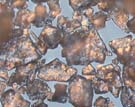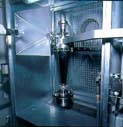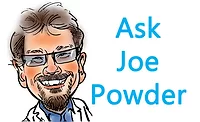Metallic Pigments for Powder Coatings


The powder coatings market has grown considerably over the last 20 years. The current market is reported to be in excess of 1.76 billion pounds. Figure 1 shows that Europe still has the lion's share with about 45%, while the North American and Asian markets continue to grow. Although metallic coatings represent a small percentage of this total, they play a significant part in providing enhanced color opportunities in the marketplace.
Benda-Lutz has been manufacturing metallic pigments, including aluminum, gold bronze and zinc products, since 1910.
The company is into its third decade of providing a global bonding capability. Benda-Lutz currently sells metallic pigments into
applications including printing inks and coatings. The typical markets for metallic powder coatings include automotive
components, architectural aluminum, office furniture, and lawn and garden applications. One reason that powder coating has
proved so popular over the last 10 years is its lack of affect on the environment. Compared with liquid paint, it has a nearly
perfect environmental profile with virtually zero VOCs, and no paint sludge residue, effluent disposal or noxious odors. The fact
that powder coating can be reclaimed thus reducing the waste has also been significant in making powder coatings a viable
alternative to existing technologies. However, collecting and re-using the overspray has caused specific problems with regard to
metallic finishes.

Effect Pigments
The most popular effect pigment is aluminum. Aluminum is available in both leafing and non-leafing grades, and in a range of particle sizes that enables the production of a variety of shades including chrome and sparkle effects. In addition, coatings with these pigments convey various properties to the final formulation. Other metallic pigments include a range of gold bronze pigments available as rich gold, rich pale and pale gold. For exterior coatings, stainless steel has proved very popular, although it lacks the luster of aluminum. In addition, a range of non-metallic pearlescent pigments are suitable for both interior and exterior applications. There are several techniques available for the manufacture of metallic powder coatings, including the following methods of incorporation.
Extrusion/Grinding
Extrusion/grinding involves premixing the metallic pigment with all the other ingredients of the formulation followed by extrusion using a single or twin-screw compounder. The extrudate is then milled to a controlled particle size and sieved. The main problem is that the shear forces destroy the metal particles and make it impossible to achieve the desired optical effect. Instead of high luster coatings, the process results in dull, gray coatings. Hammer finishes are usually produced by this technique.
Dry Blending
The process of dry blending metallic pigments into conventional powder coatings can produce satisfactory results in laboratory tests. However, in application plants where powder recovery is used, it is impossible to produce acceptable results without large color differences. In addition, varying phenomena can result including poor charging characteristics and pigment agglomerations particularly on the tips of the guns.
Standard Bonding
This represents the method we originally used, and is currently in use by some companies today. It offers an improvement over dry blending in that it provides improved application characteristics.
Blitz(tm) Bonding
In 1980, we introduced a technique for adding effect pigments to powder coatings. The process involves adhering the effect pigments to the powder coating particles to prevent separation during application and recycling. (Figure 2)Following research during the 1980s and early '90s, a new continuous multi-stage process for bonding was introduced. The main advantage with the Blitz Bonding process is the degree of control over the entire operation. Batch size becomes less of an issue and there are significantly improved application characteristics. This process was successfully introduced into the United States during 1996. To develop the process, it was first necessary to have a viable method to determine that a product was correctly bonded. Several techniques have been developed to check for bonding quality, including photo microscopy, various charging techniques, and the cyclone test (see Figure 3).
Testing was carried out to quantify and compare the color difference effect caused by both dry blending and Blitz Bonding. Although it is difficult to obtain a single value for the color measurement, which is proportional to the pigment content, it was decided to use the lightness factor at five angles. The lightness curve of the base material is defined as 0% and the virgin metallic powder as 100%. Material was passed through the cyclone and L- values taken for each run at the five angles. After three runs the dry blended powder shows an effect loss of 50% (see Figure 4).
A similar exercise was carried out on the bonded sample and in this case even after three runs the lightness factor remains at 95% (see Figure 5).
All powder chemistries have been successfully Blitz bonded including hybrids, TGIC, Primid, and GMA acrylics.

Conclusion
Bonding effect pigments to powder coatings using the Blitz Bonding process offers the formulator and final end user significant advantages. These include the ability to take aluminum out of the plant and hence reduce the risks associated with handling aluminum. Above all, it allows the applicator to apply a consistent product with a constant metallic effect. These culminate in the powder manufacturer and end user achieving cost savings.For more information on pigments, contact Benda-Lutz, Corp., 10500 Toebben Dr., Independence, KY 41051; phone
859/746.0392; fax 859/525.3012; e-mail office@benda-lutz.net; or visit www.benda-lutz.com.
Links
Looking for a reprint of this article?
From high-res PDFs to custom plaques, order your copy today!






